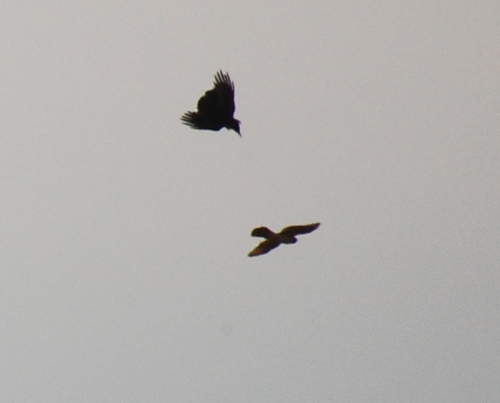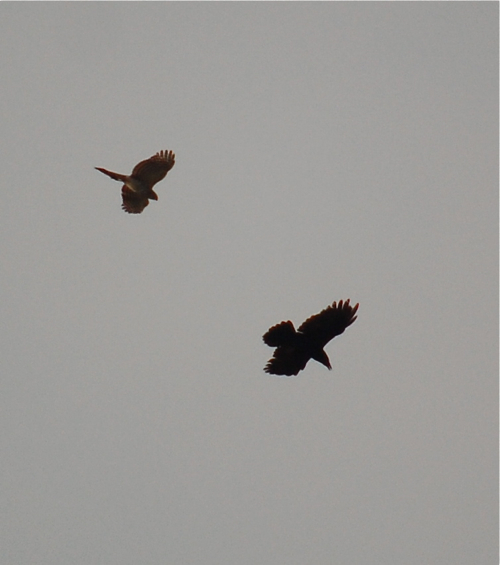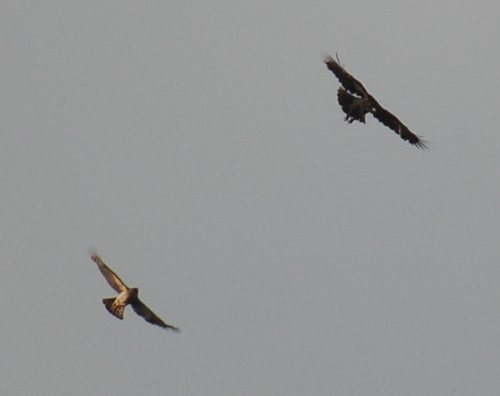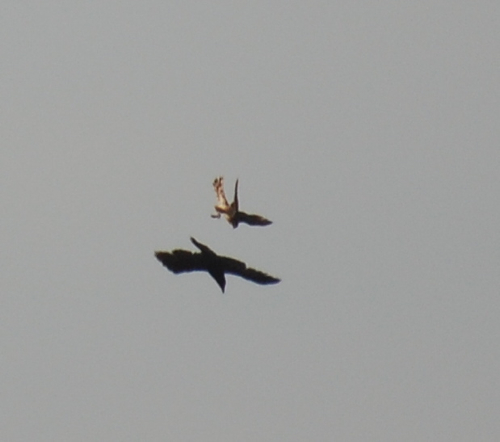When I can't fill the feeders at Mr. Neil's house, the groundskeeper named Hans usually does the honors. He does an admirable job but he has a ton of things to do like maintaining trails and keeping the grass and weeds trimmed around the beehives. And now that we have 8 beehives, let's bow our heads in honor of dear, sweet Hans who has sustained more stings than any of us and yet makes life easier for hive inspections. Moment.
But sometimes certain feeders go empty (especially the suet log, because I appear to be the only person in the US who actually enjoys the feeling of squashed animal fat mixed with peanut butter on my fingers). And this summer, the safflower feeder went empty but Mr. Neil called me over to see what had been filled inside in place of the usual safflower:
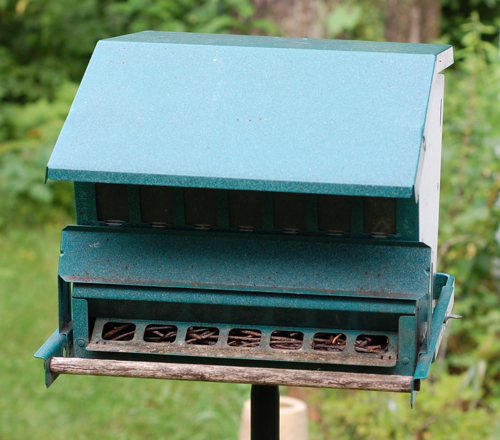
I knew as soon as I saw the feeding ports what had moved in, but then wondered, "How did a house wren fit in there? I know they are tiny, but wow!" House wrens are the smallest cavity nesting birds in our neck of the woods. They only need a hole that is one inch in diameter to fit their tiny bodies through. The other thing is that you can usually id the type of cavity nesting bird in your nest box by the material--house wrens are all sticks. Chickadees usually weave a neat fur lined cup nest, bluebirds nests are made of fine grasses and tree swallows line the nest cup with huge feathers from ducks. House sparrows will make a nest out of everything: grass, sticks, vines, cellophane, cigarette butts, etc.
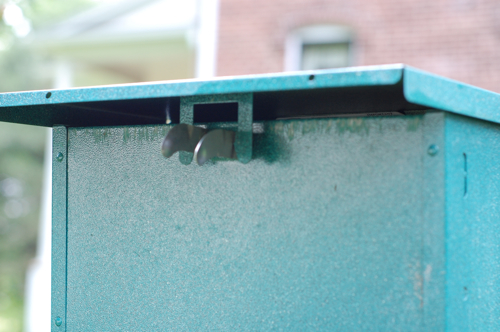
As I wondered how the house wren was getting in out of the feeder, I soon had my answer. Apparently the lid had been left only slightly ajar and that was all the enterprising little male needed to collect twigs.
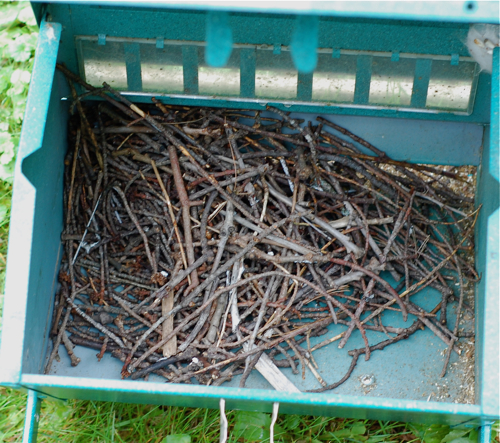
When we looked inside, we could see a whole pile of sticks, but no complete nest. One of the really interesting things about the tiny house wren is that they will make five nests, use one to rear chicks and the rest as decoys to fool marauding predators (even defending a decoy nest as if there were eggs inside--clever birds). I figured this was going to be a decoy nest. Mr. Neil didn't mind the wrens so we left the roof ajar.
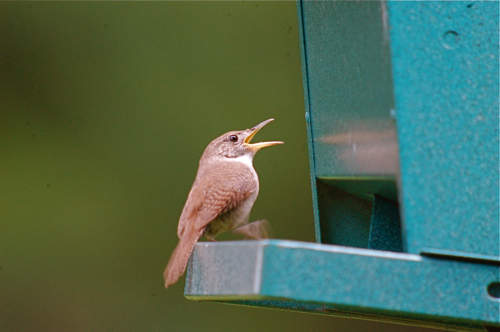
Non Birding Bill and I came over for a bee inspection and some grilling and we watched the wren declare his territory in boisterous song.
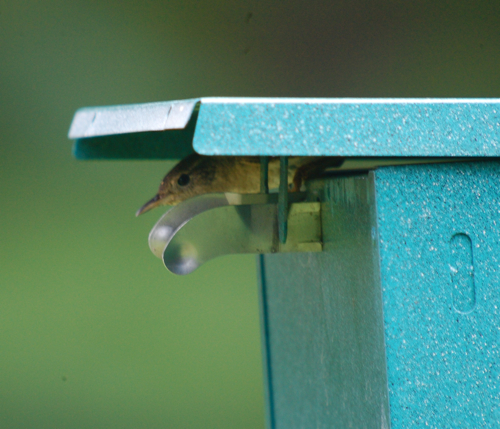
There was at least one female who took him up on his twittery offer and inspected the feeder inside and out. I always figured that the males put sticks in several locations, the female chooses the one she will use for eggs and the rest become the decoys. She flew off after a few moments and I thought, "She's going to make that one the decoy."
Cut to one week later! On Sunday, we arrived for another cookout at Mr. Neil's and as soon as we arrived he took me out to the feeder and showed me this:
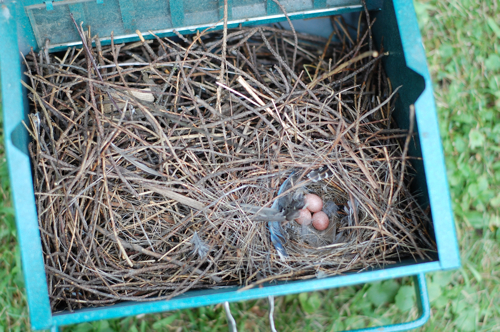
Gah! A feeder full of sticks, a small feather-lined cup and three tiny house wren eggs. Well, this feeder is out of commission for a month. I think the female was still in process of laying eggs and that incubation will start today or tomorrow. From there we have about 12 days of incubation and then another 12 - 13 days before the chicks fledge. I think the other birds can live without safflower that long.
I must say that this breaks one of my bird feeding rules of thumb: don't have nest boxes around your bird feeding station. Birds generally don't want to nest near where nest raiders show up on a regular basis (ie squirrels, chipmunks, blue jays, crows, woodpeckers, raccoons, etc). At least they nested in a squirrel proof feeder, so that solves that problem and maybe the wren's nest decoy strategy will fool the other egg eaters?

 As part of my duties as a park ranger, we go out and rove in the park. Basically, we tote around a back pack with park info and you're on hand to answer questions--it's fun, it's a bit like improv. I like to take my scope for birding of course, but it gives me a chance to explore more areas of the park that I otherwise wouldn't visit. One is Lock and Dam 1. On Friday, we did a canoe paddle through the lock (you really haven't experienced the Mississippi until you've taken a canoe or kayak through a lock and dam--to be tiny in something so big is amazing). It was fun Saturday morning to look down on it knowing the day before I had been right in it.
As part of my duties as a park ranger, we go out and rove in the park. Basically, we tote around a back pack with park info and you're on hand to answer questions--it's fun, it's a bit like improv. I like to take my scope for birding of course, but it gives me a chance to explore more areas of the park that I otherwise wouldn't visit. One is Lock and Dam 1. On Friday, we did a canoe paddle through the lock (you really haven't experienced the Mississippi until you've taken a canoe or kayak through a lock and dam--to be tiny in something so big is amazing). It was fun Saturday morning to look down on it knowing the day before I had been right in it.
 This is the view from the deck of the Lock and Dam 1 visitor center. You can see the peregrine nest box on the far left on the wall (note the box below the brick building). As I watched this, I noticed some flapping behind the big pipe on the right...
This is the view from the deck of the Lock and Dam 1 visitor center. You can see the peregrine nest box on the far left on the wall (note the box below the brick building). As I watched this, I noticed some flapping behind the big pipe on the right...
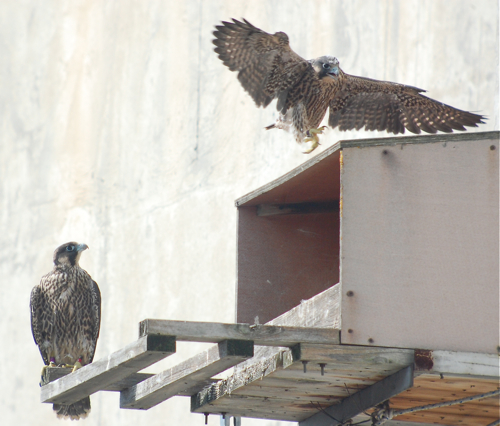 The other two continued to practice. The one on top of the box almost seemed like it was really going to get completely off the box, but stayed and screamed impatiently for one of the adults to feed it. The adults flew in once or twice with food, but no drop offs were made in the box. They want the young out of the nest so they can learn to fly. The chicks want to be fed and eventually, they will put two and two together. When the chicks are hungry enough, they will fly out towards the adults with the food.
The other two continued to practice. The one on top of the box almost seemed like it was really going to get completely off the box, but stayed and screamed impatiently for one of the adults to feed it. The adults flew in once or twice with food, but no drop offs were made in the box. They want the young out of the nest so they can learn to fly. The chicks want to be fed and eventually, they will put two and two together. When the chicks are hungry enough, they will fly out towards the adults with the food.





 Just a heads up that right now is an excellent time for peregrine falcon viewing at
Just a heads up that right now is an excellent time for peregrine falcon viewing at 


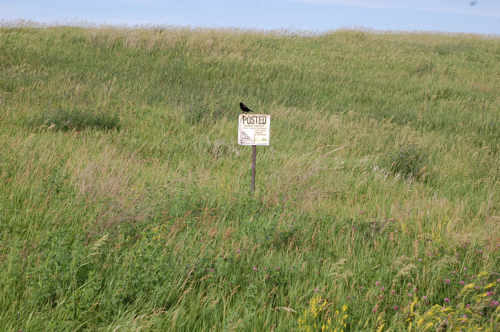 I've had some work taking me to southern Minnesota the last few weeks where I spend the day out in a field with red-winged blackbirds and a few other prairie species.
I've had some work taking me to southern Minnesota the last few weeks where I spend the day out in a field with red-winged blackbirds and a few other prairie species.







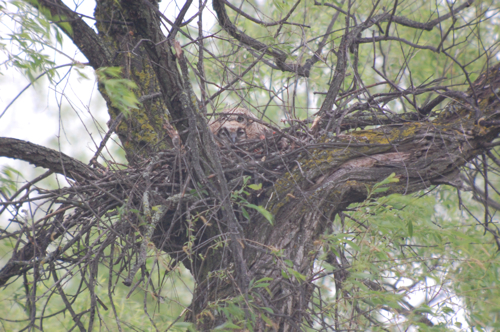 I was archiving some photos and found this photo from this year's Detroit Lakes Festival of Birds of a great horned owl nest with 2 chicks. I figured the least I could do is post this photo after yesterday's link to a flycatcher eating what appears to be Cthulu.
I was archiving some photos and found this photo from this year's Detroit Lakes Festival of Birds of a great horned owl nest with 2 chicks. I figured the least I could do is post this photo after yesterday's link to a flycatcher eating what appears to be Cthulu.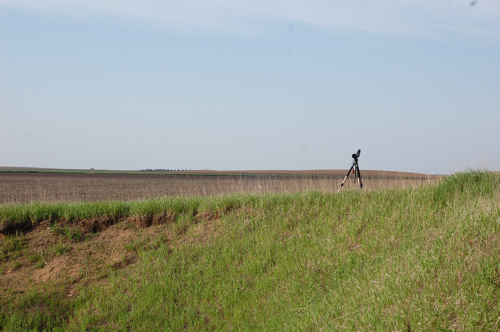 My spring travels are almost finished and each day I feel like I find myself in a new office. When not at the park service, the above photo is what my office looks like. Some cubicle view, huh? The only downside is that I have the occasional misstep into a badger hole. Fortunately, no badgers have confronted me on this faux pas, which makes me suspect shenanigans on their part as the holes are well hidden in the tall grasses.
My spring travels are almost finished and each day I feel like I find myself in a new office. When not at the park service, the above photo is what my office looks like. Some cubicle view, huh? The only downside is that I have the occasional misstep into a badger hole. Fortunately, no badgers have confronted me on this faux pas, which makes me suspect shenanigans on their part as the holes are well hidden in the tall grasses.



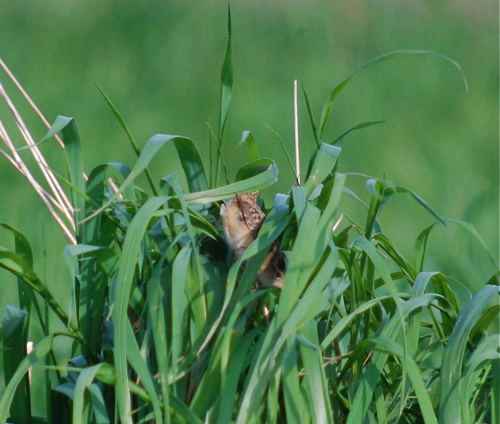 Another benefit is that I got to watch a sedge wren delurk itself. I hear one quite a bit, but most of the time, the singing happens behind grasses and I can't see it. The closest I came was the above photo until...
Another benefit is that I got to watch a sedge wren delurk itself. I hear one quite a bit, but most of the time, the singing happens behind grasses and I can't see it. The closest I came was the above photo until...
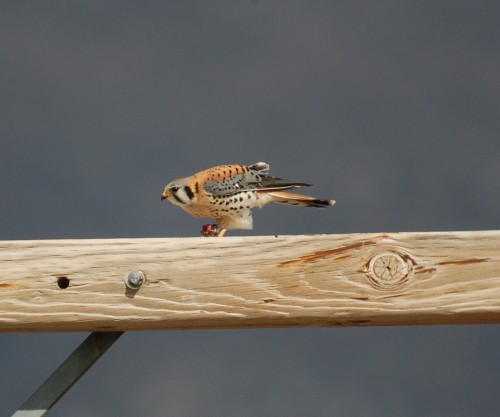
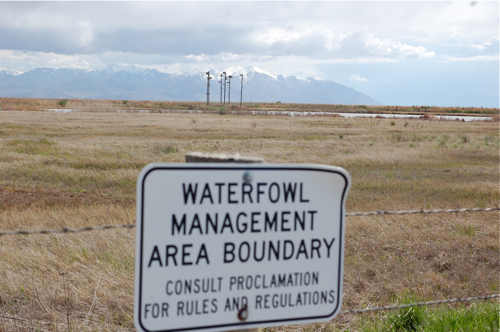
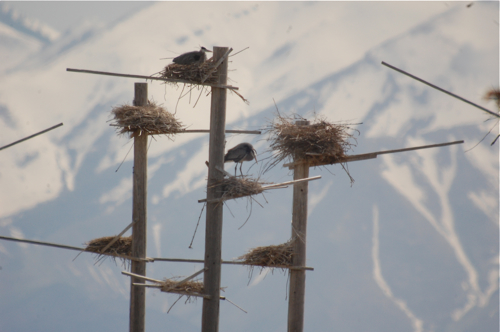 I'm used to seeing great blue
I'm used to seeing great blue 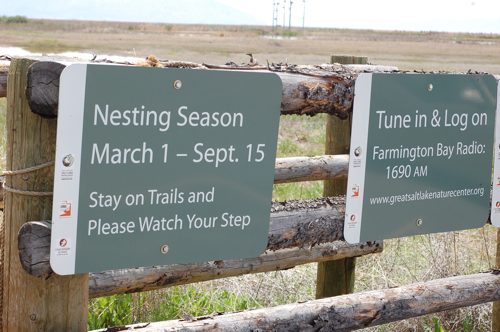 Farmington works hard to keep humans from tramping on ground nesting birds. Trails are blocked from motorized vehicle traffic during nesting season and signs warn you to watch your step.
Farmington works hard to keep humans from tramping on ground nesting birds. Trails are blocked from motorized vehicle traffic during nesting season and signs warn you to watch your step.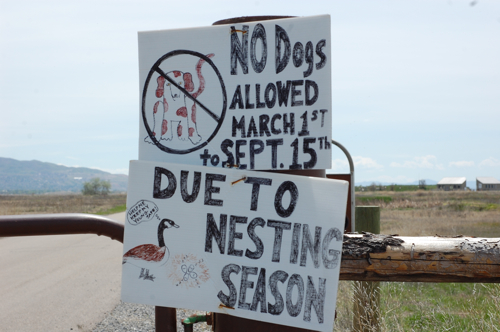
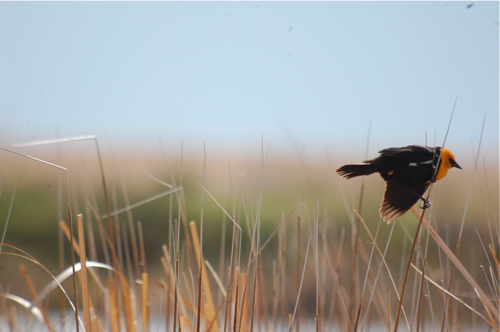
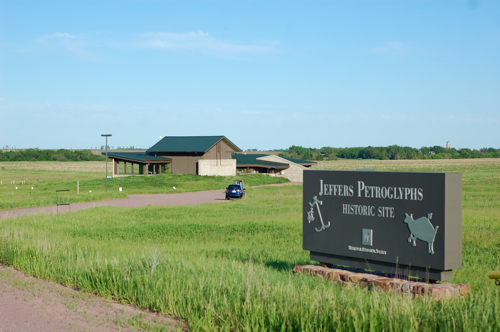
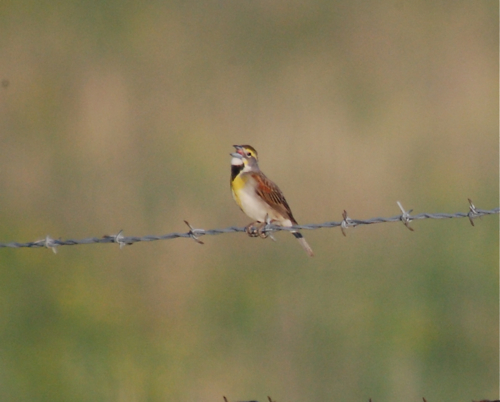
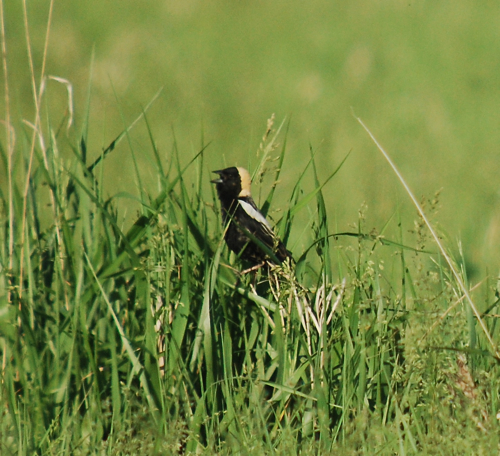
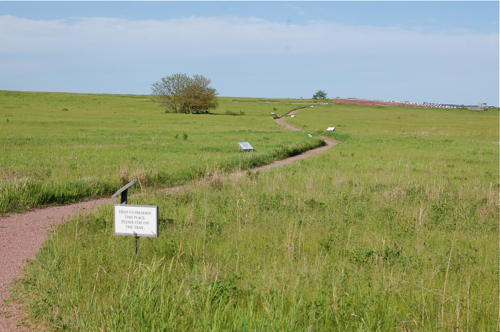
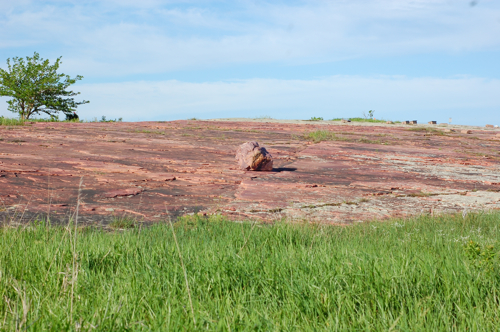
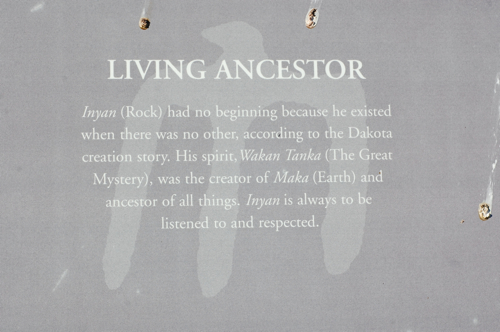


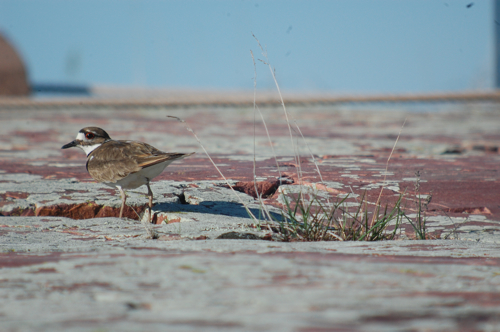

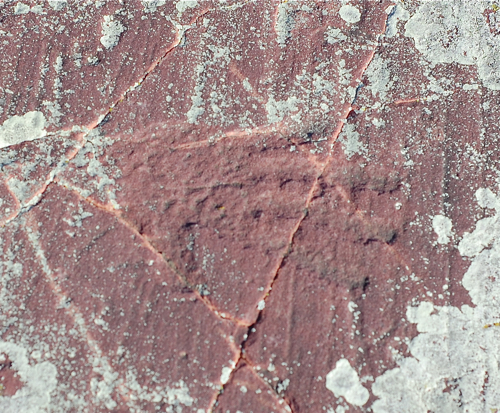
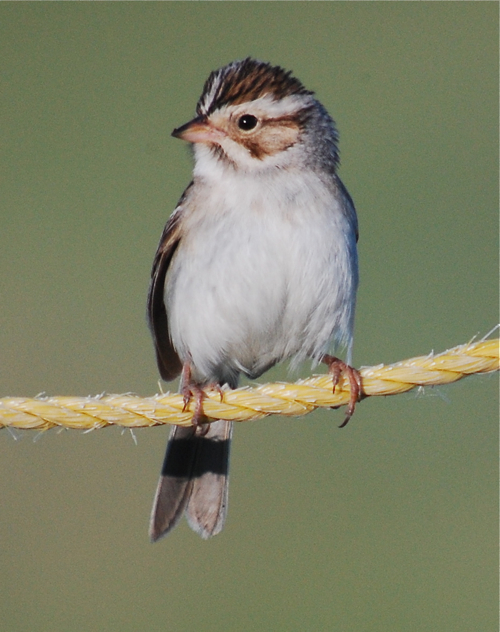






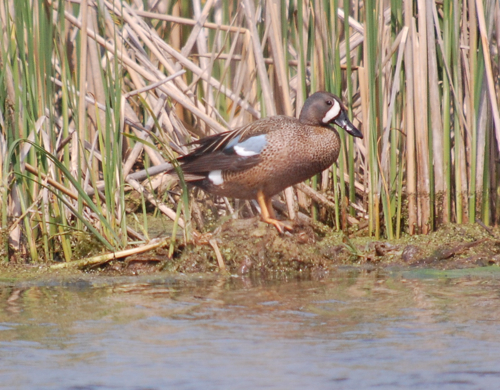

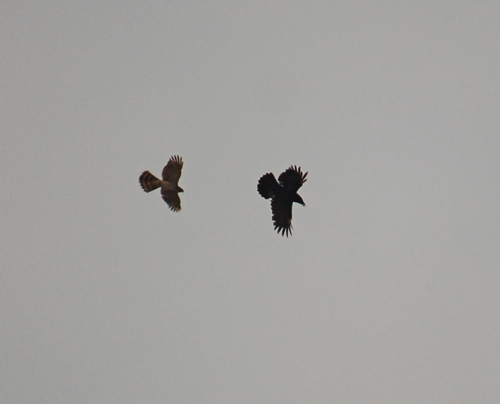 I caught this interesting interaction between a Cooper's hawk and crow. I had noticed the crow going back and forth throughout the day and figured it had a nest nearby and was bringing back food. Later, I heard red-winged blackbirds giving their aerial predator call and looked up. The crow was chasing a Cooper's hawk. The hawk circled as though to glide into a thermal but then turned the tables and chased the crow.
I caught this interesting interaction between a Cooper's hawk and crow. I had noticed the crow going back and forth throughout the day and figured it had a nest nearby and was bringing back food. Later, I heard red-winged blackbirds giving their aerial predator call and looked up. The crow was chasing a Cooper's hawk. The hawk circled as though to glide into a thermal but then turned the tables and chased the crow.